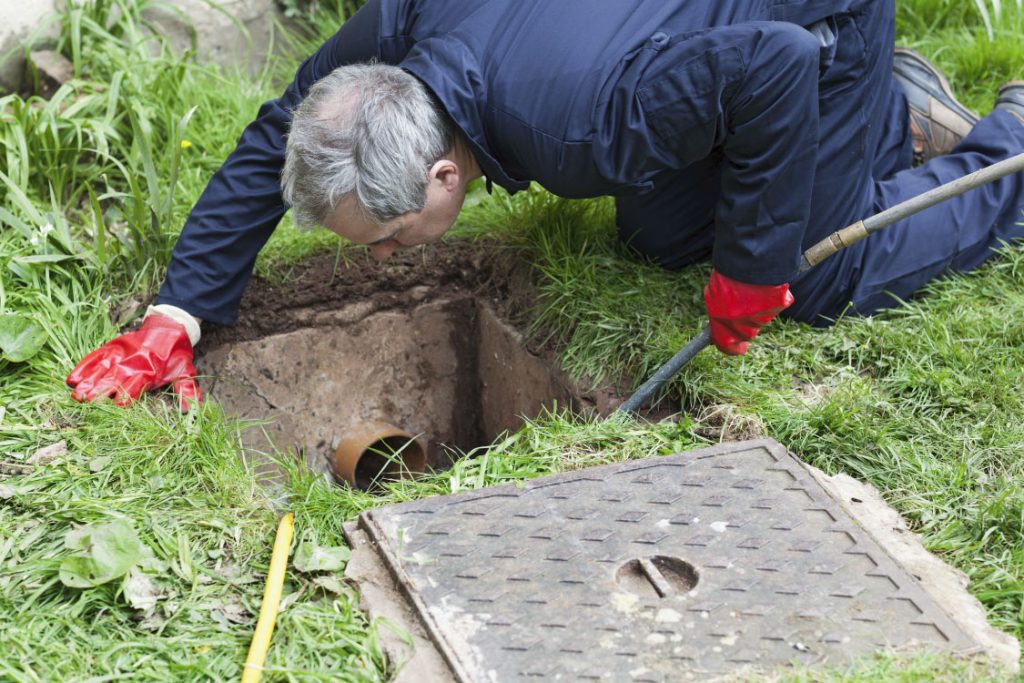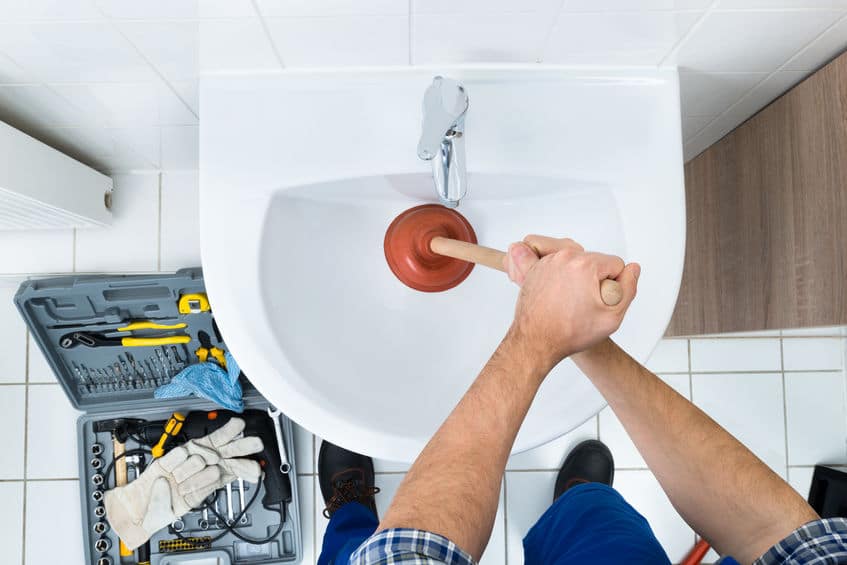Guidelines for Managing a Blocked Drain Before Contacting Plumbing Professionals
Guidelines for Managing a Blocked Drain Before Contacting Plumbing Professionals
Blog Article
How do you feel on the subject of What I learned from trying to deal with a clogged drain?

Introduction
Dealing with a blocked drainpipe can be an irritating experience, disrupting everyday tasks and potentially creating damages to your home. Nonetheless, prior to connecting to pipes specialists, there are actions you can require to address the issue on your own. In this guide, we'll explore do it yourself solutions and safety nets to take on a blocked drainpipe efficiently.
Recognizing the Concern
The very first step in attending to a blocked drainpipe is identifying the indicators. Sluggish drainage, gurgling audios, foul odors originating from drains pipes, or water backing up prevail indicators of a blocked drain. Recognizing these indications early can assist avoid better issues.
Choosing the Right Plumbing Service
When picking a pipes solution, take into consideration variables such as experience, licensing, and consumer testimonials. Select a credible plumber with a record of quality handiwork and transparent prices practices.
Expense Factors to consider
The price of professional drain cleaning services can vary depending on the intensity of the obstruction and the plumbing professional's rates. Request quotes from several providers and ask about any added fees to make certain openness and avoid surprises.
Security Precautions
When trying DIY drainpipe cleansing, prioritize safety. Put on protective handwear covers and eyewear to stay clear of contact with dangerous chemicals or bacteria. Never ever mix different drain cleansing items, as this can produce unsafe fumes.
Case Researches
Real-life instances show the effectiveness of DIY remedies and the relevance of prompt professional treatment in fixing drain blockages.
Usual Sources Of Blocked Drainpipes
Understanding the variables that add to drain pipes blockages is vital for effective resolution. Common perpetrators include hair, soap residue, oil, food debris, and international objects like sanitary items or paper towels. Tree origins attacking below ground pipes can additionally cause considerable clogs.
Do it yourself Solutions
For small clogs, numerous do it yourself solutions can be efficient. Pouring boiling thin down the drain can help liquify oil and debris. Baking soda and vinegar or a mix of salt and baking soft drink can function as all-natural cleansers. Using a bettor or plumbing serpent to remove blockages is one more option.
Devices and Equipment
Having the right tools available can make do it yourself drainpipe cleaning up more effective. A plunger is a functional tool for getting rid of blockages in sinks, toilets, and showers. A plumbing serpent or auger can get to deeper clogs, while drainpipe cleansing chemicals can be used meticulously for persistent blockages.
Safety nets
To stay clear of future obstructions, embracing preventive measures is important. Mount drainpipe guards or strainers to catch hair and particles prior to they go into the pipelines. Consistently flush drains with warm water to dissolve grease buildup, and prevent disposing of oil or strong waste down the drain.
When to Call a Professional
While DIY services can settle minor clogs, specific indicators indicate the need for expert support. Relentless clogs, foul odors despite cleaning up efforts, or multiple drains pipes supporting all at once are red flags that call for skilled intervention.
Verdict
By adhering to the suggestions outlined in this guide, you can efficiently take on blocked drains pipes and avoid future pipes problems. Whether choosing do it yourself remedies or seeking specialist support, timely activity is crucial to keeping a healthy and balanced plumbing system and preserving the honesty of your home.
How to Clear a Clogged Drain Yourself (And When to Call In the Professionals)
What Can Clog a Drain
Dirt Skin flakes Hair Grease Soap scum Food Offset pipes Tree roots Small objects Mineral buildup DIY Tricks to Unclog a Drain
You can fix this! Once you have identified the source of the clog (or have a vague idea), you can try one or a combination of these fixes in order to clear your plumbing.
Wire Hanger or Snake
Untangle and clear out hair from a drainpipe with a homemade snake. Use a straightened-out wire hanger with a 90-degree angle hook to locate the clog and drag out any unwanted material.
Remember not to push the clog further down to where the wire hanger cannot reach! If you need to follow up with a plunger, give it a try. Your efforts might be more successful after it’s been wire-snaked.
If you want to get fancy and don’t have a wire hanger to spare, head to the store and pick up a hand-operated drain snake. You can get one for $10-$30. It may save you the hassle, and provide additional length to reach deep into the clogged pipe.
Plunger
A cup plunger has a suction cup attached to a wooden handle. The rubber creates a seal around the drain, and increases the pressure force of the plunger.
Plunge for 30-second increments to loosen the clog. This may need to be repeated over the course of 15-20 minutes. Once plunged, run the water to flush the remaining material out of the drain.
Remember– never use a plunger if you have used a chemical drain cleaner. These chemicals can splash up from the force of the plunger and cause serious injury or burns.
Boiling Water
Hot water can sometimes break up materials into a flushable amount. Dirt, grease, and soap buildup requires heat in order to unstick from surfaces.
Take your kitchen kettle and heat your water to a boil. Once it reaches a rolling boil, pour it directly down the drain into the blockage. Carefully follow with plunging, if necessary.
Don’t worry if this takes more than one try! It can often take multiple kettles and repeated plunging in order to clear a particularly stubborn clog.
Chemical Drain Cleaner
As a last resort, pick up a bottle of chemical drain cleaner. Drain-cleaning chemicals are potent, and not very good for the environment.
You may need to wear protective eyewear in gloves before handling your bottle of chemical drain cleaner. Follow the instructions printed on the bottle, and flush with water as soon as the instructions allow. Do not follow with plunging.
Baking Soda and Vinegar
As a safer alternative to chemical drain cleaner, baking soda and vinegar can create a chemical reaction that clears tough clogs.
Combine one cup of cleaning vinegar with one cup of boiling water, and set aside. Once you have done this, pour half a cup of baking soda down the drain. Give the baking thirty seconds to settle and cover a large portion of the problem drain.
Following the baking soda, pour down your vinegar and hot water solution. Once the vinegar and baking soda combine, the mixture will bubble and fix. Let this reaction fizzle in the drain for about an hour.
After an hour, follow with a kettle’s worth of hot water. The heat and liquid should flush out any remaining material.
When to Call a Plumber
If your DIY attempts haven’t cleared your clog drain, it’s time to call in a professional. It’s not worth losing access to your kitchen sink or high-traffic bathroom. A clog in a vital area can keep you from the things you’d rather be doing, and derail your routine.
Anytime a clog is causing water to spread is a time to call in a plumbing service. What starts out as a little bit of water can quickly grow into serious, expensive water damage.
Additionally, a serious clog can result in burst pipes or serious leaks. Make sure you know when to take it seriously!
https://myguysnow.com/how-to-clear-a-clogged-drain-yourself-and-when-to-call-in-the-professionals/

I came across that entry on Some easy tips to fix blocked drains while browsing the internet. Are you aware of another individual who is in to the topic? Please feel free to promote it. We take joy in your readership.
Call Today Report this page